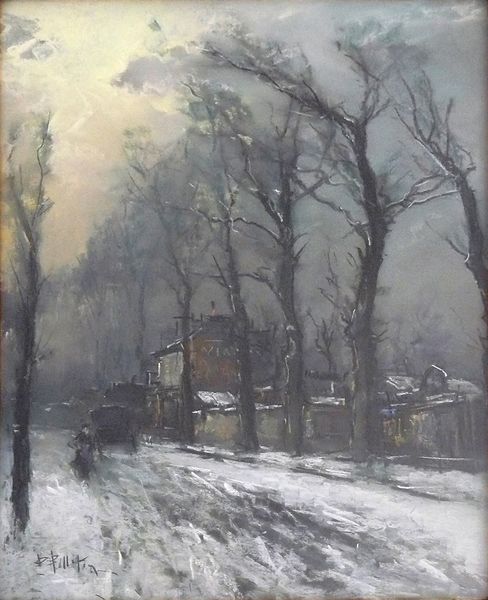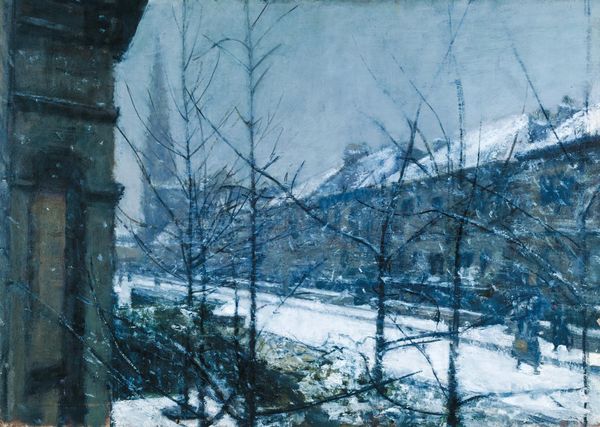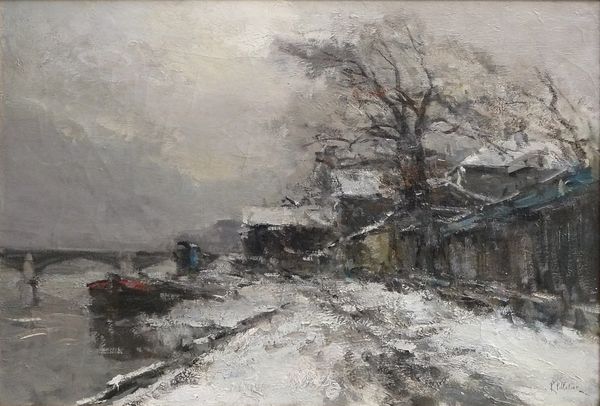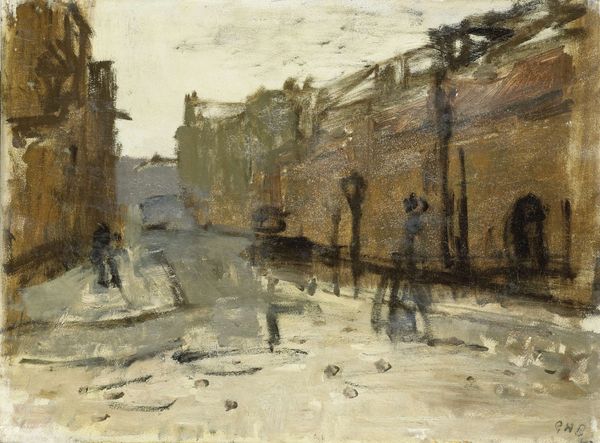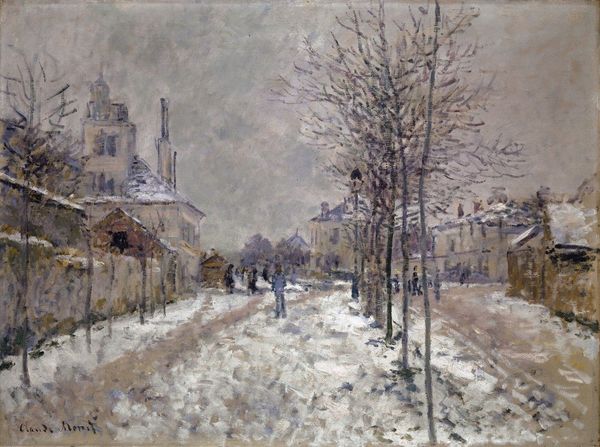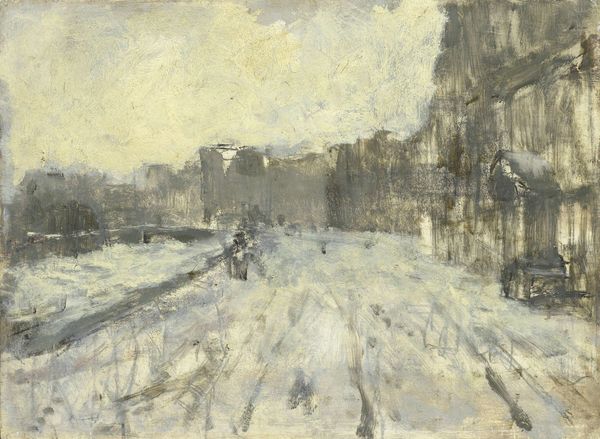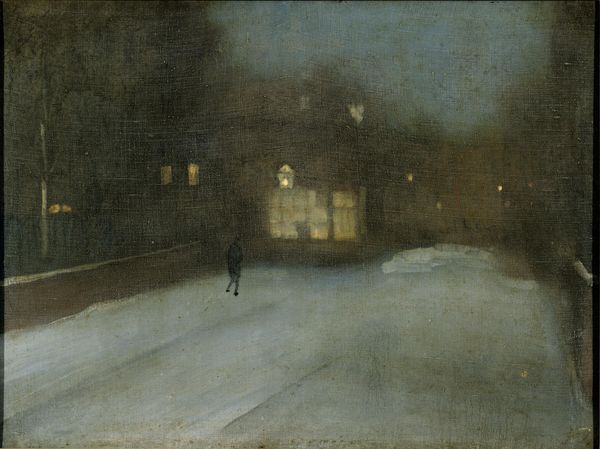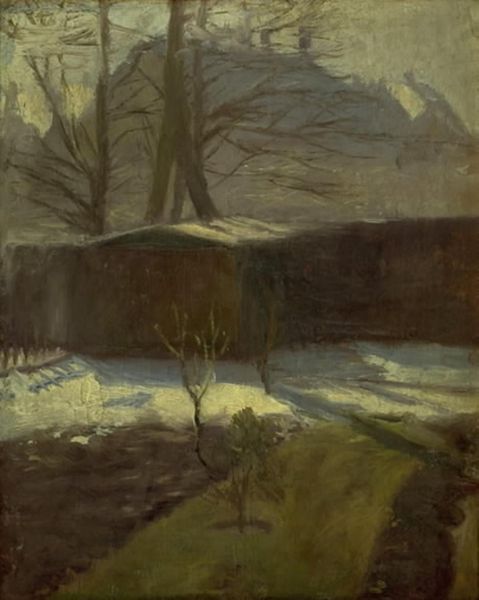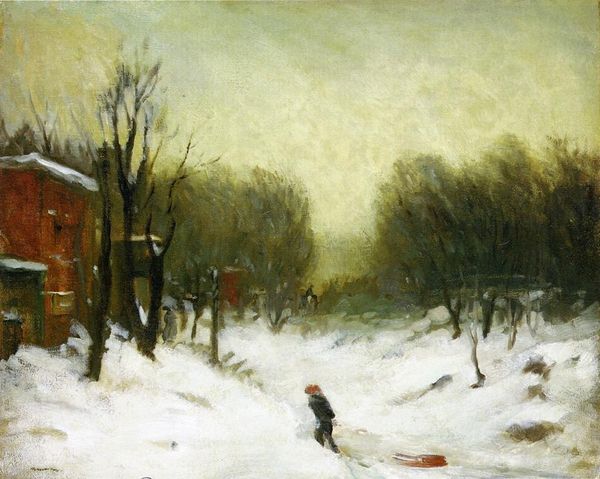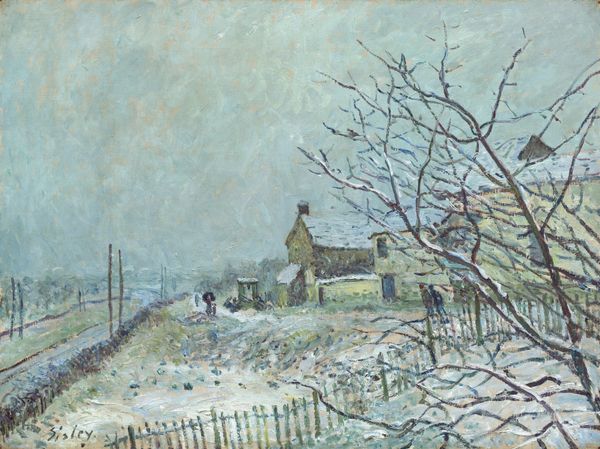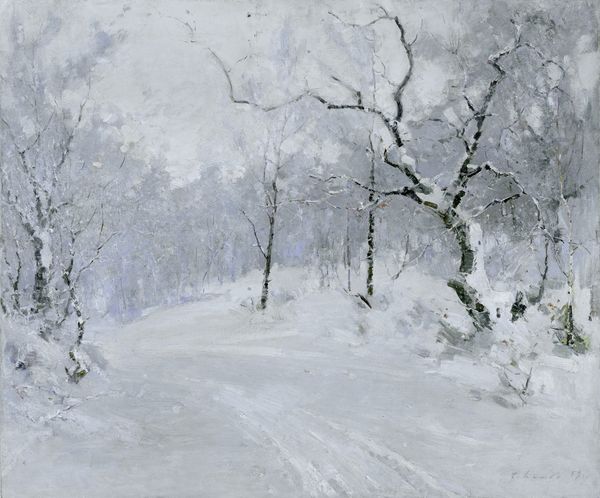
Dimensions: 38 x 50 cm
Copyright: Public domain
Curator: Here we have "Saint Ouen, le Marché Malik, l'hiver," painted by Pierre-Jacques Pelletier in 1914. Editor: Oof, that's a cold, damp scene. Makes you shiver just looking at it. Very muted, very gray, but those muted colors capture that specific kind of heavy winter light, right? Like the world is holding its breath. Curator: Indeed. Pelletier offers us a fascinating snapshot of a market scene cloaked in the stillness of winter, rendered through the lens of both realism and impressionism. It invites us to consider the urban landscape of early 20th-century France. Think about the social dynamics inherent in a market, the class implications during wartime... Editor: Absolutely, there is almost this, um, bleakness in the scene. The heavy atmosphere, the blurred figures… It almost feels apocalyptic to me, or maybe the world ending like a watercolor fading away. I mean, you can see how it feels like, in that era, how it can lead to things like absurdism in arts. Curator: Precisely, the social anxieties of the time are almost palpable. And considering the date – 1914 – the outbreak of the First World War looms large, doesn’t it? We can see here more than just winter; the emotional weight of a society teetering on the brink. Editor: Oh, one hundred percent! Looking closer, I see how those darker strokes create a texture of grit, and even those faint, ghost-like figures walking towards us have that same feel of a heavy weight, almost making you suffocate along with them, literally a weight of a time era frozen within that very single artwork. I'm just struck by the almost complete lack of color! It feels prophetic. Curator: Well, and from a stylistic angle, Pelletier’s use of oil on canvas here is incredibly effective in conveying both the dampness of the winter air and the solid weight of the buildings in the distance. It blurs those typical distinction lines on city landscape artworks. Editor: It's funny how art can trap you, right? The more I linger, the more my initial feeling of slight dread sort of melts into a quiet appreciation. A quiet and solitary understanding that the artist shares the very specific melancholy in an uncanny manner. Curator: And ultimately, it prompts us to think critically about the stories embedded in these landscapes and about how broader socio-historical conditions inform and influence artistic representation, and of the relationship between our subjectivity and a work of art, but perhaps as a form of a reflection that creates social awareness of both the past and present as cyclical eras. Editor: Exactly. That makes perfect sense. Thanks for sharing all of those interesting aspects!
Comments
No comments
Be the first to comment and join the conversation on the ultimate creative platform.
